Type 2 Collagen at CSC Regenerative Medicine
Our 2- Month Regenerative Medicine Program
Initial Evaluation
- Clinical exam and send for imaging if needed
Consultation
- Discuss imaging findings to Diagnose and start treatment plan
Physical Therapy
- Setting up for appropriate therapy
Oral Medication
- Start appropriate medication if needed
Oral Supplementation
- Discuss Type 2 Collagen peptides if needed
Joint Therapy
- Advanced ice machine and Moist heat application
Laser Treatment
- High Intensity IV laser therapy
Injection Treatment
- PRP, Stem Cell, and Viscosupplementation based on individual needs
Natural Support for Joint & Spine Health
At CSC Regenerative Medicine, we believe healing starts from the inside out. That’s why we include Type 2 Collagen supplementation in many of our personalized treatment plans. This natural supplement helps repair cartilage, reduce inflammation, and support long-term joint and spine health—whether used on its own or alongside advanced treatments like PRP, laser, or stem cell therapy.

What Is Type 2 Collagen?
Type 2 Collagen is the primary protein found in joint cartilage and spinal discs. It provides structure, flexibility, and shock absorption—making it essential for smooth, pain-free movement.
As we age or recover from injury, our natural collagen levels decline. Supplementing with Type 2 Collagen helps restore strength and mobility by giving your body the nutrients it needs to heal.
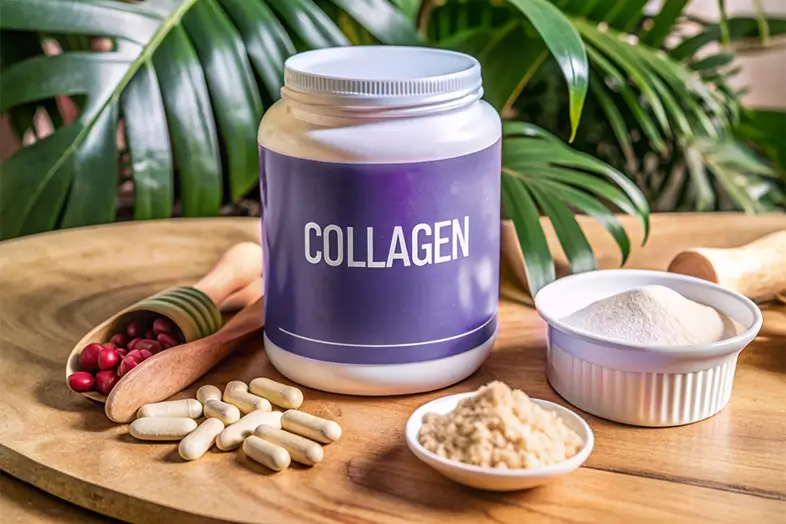
Key Benefits of Type 2 Collagen
Reduces Joint Pain
Clinically shown to relieve pain in arthritis and degenerative joint conditions.
Improves Flexibility & Mobility
Supports cartilage health for smoother, more comfortable movement.
Natural Anti-Inflammatory Effects
Helps reduce swelling, stiffness, and irritation in joints and soft tissues.
Protects & Repairs Cartilage
Promotes new tissue growth and helps slow down cartilage breakdown.

Conditions That May Benefit From Collagen Supplementation
- Osteoarthritis
- Rheumatoid arthritis
- Chronic joint inflammation
- Cartilage degeneration
- Disc-related spine issues
- Post-injury joint recovery
- Pre- or post-surgical joint care
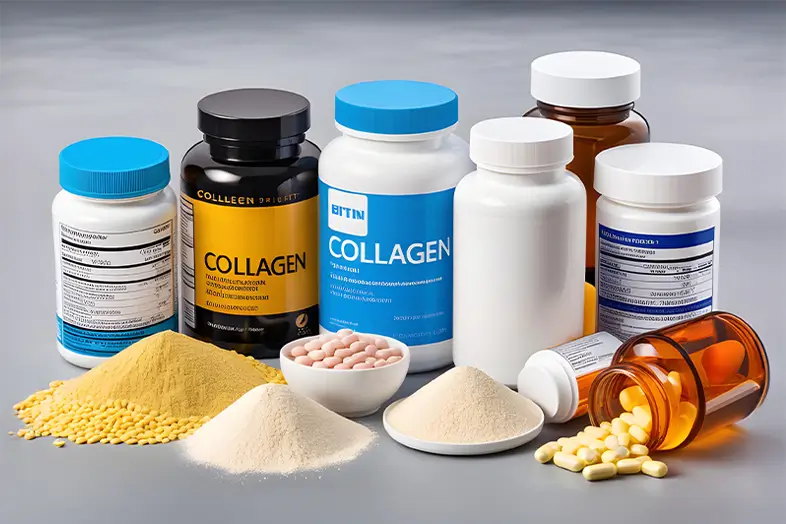
Part of Our 2-Month Regenerative Program
Our Type 2 Collagen supplement is part of a larger, proven system for recovery:
2-Month Program Includes:
- Full evaluation & imaging
- Custom treatment plan
- Physical therapy
- Oral medication (if needed)
- Collagen supplementation
- Moist heat & cryotherapy
- Class IV laser therapy
- PRP, stem cell, or viscosupplementation injections
We also offer a 6-month follow-up program to track your progress and continue support for long-term joint and spine health.
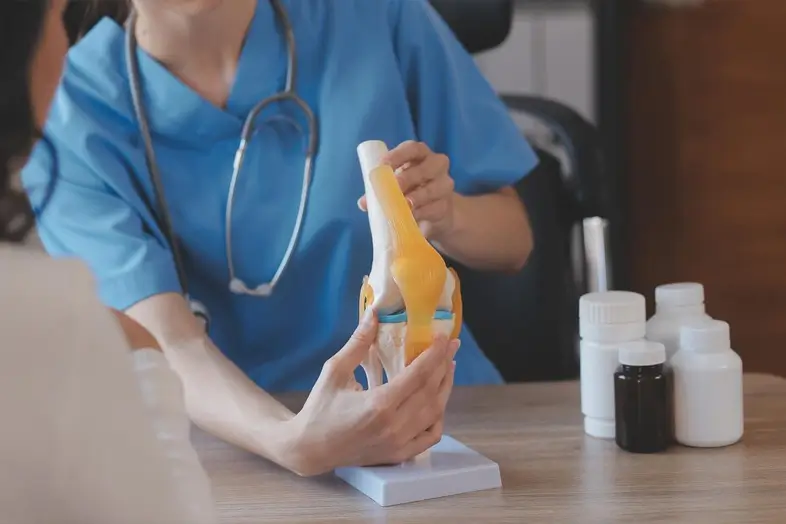
How Collagen Supports Other Treatments
Type 2 Collagen works best when paired with our advanced regenerative treatments:
- With PRP or Stem Cells: Enhances healing by providing building blocks for cartilage repair.
- With Laser Therapy: Strengthens connective tissues as laser reduces inflammation.
- With Physical Therapy: Helps joints respond better to stretching and strengthening.
Collagen Types: What You Need to Know
There are several types of collagen, but Type 2 is best for joint and spine health:
Type | Supports |
Type I | Skin, bones, tendons |
Type II | Cartilage, joints, spinal discs |
Type III | Muscles, organs, arteries |
Type V & X | Bone formation and connective tissue structure |

Native Type II vs. Hydrolyzed Collagen
Native Type II Collagen
- Source: Chicken sternum cartilage
- Benefits: Maintains full structure, reduces inflammation, modulates immune response
- Best for: Arthritis and joint-specific inflammation
Hydrolyzed Collagen (Peptides)
- Source: Bovine, porcine, or marine
- Benefits: Easily absorbed, supports general tissue repair
- Best for: Skin, ligaments, and full-body recovery
Which is better?
Both forms have value. At CSC, we recommend the right type—or combination—based on your individual condition and goals.
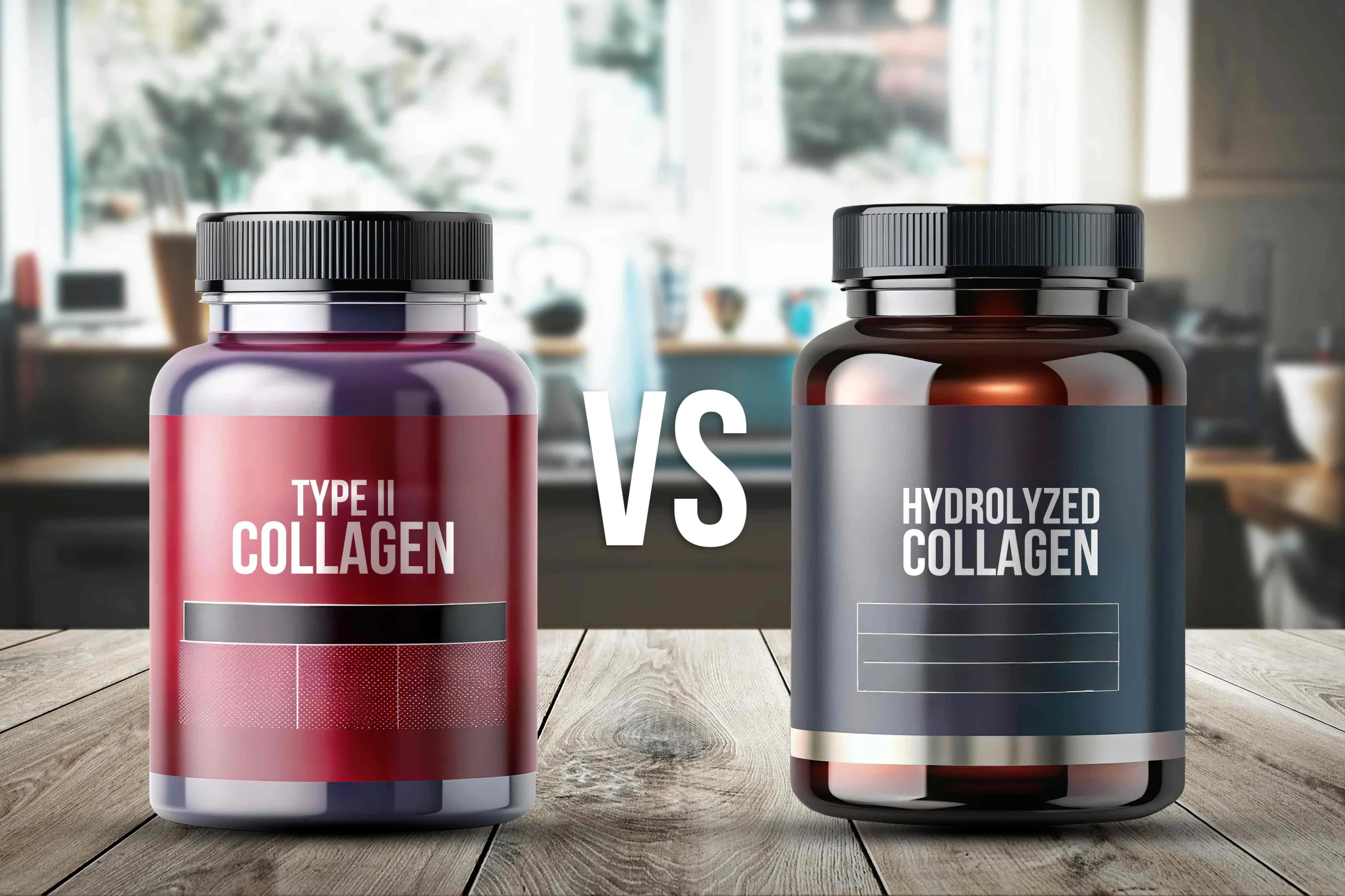
Do Collagen Supplements Really Work?
Study: Collagen Supplementation & Joint Health (2023, Nutrients Journal)
- Collagen improves joint structure and reduces pain
- Native Type II supports immune-based healing in arthritis
- Hydrolyzed collagen enhances tissue repair across multiple systems
Conclusion: Science supports collagen as a safe, effective tool for joint pain relief and tissue healing.
Supplements & Anti-Inflammatory Medications for Joint & Spine Pain
When managing joint and spine pain—whether due to osteoarthritis, rheumatoid arthritis, or everyday wear and tear—a combination of natural supplements and conventional anti-inflammatory medications can help. Below, we break down four common options in detail so you can make an informed decision about which approach best suits your needs.

Glucosamine Sulfate
What is Glucosamine Sulfate?
Glucosamine sulfate is a naturally occurring compound found in healthy cartilage. It provides the raw materials your body needs to maintain and repair joint tissue. This supplement is especially popular for supporting joint health and alleviating pain associated with cartilage breakdown.
Key Benefits of Glucosamine Sulfate
- Supports Cartilage Repair: By supplying essential building blocks, glucosamine sulfate helps repair damaged cartilage and maintain cushioning between joints, which can reduce friction and wear.
- Reduces Osteoarthritis Pain: Many patients report decreased joint pain and improved function after regular supplementation. It can make everyday movements smoother and more comfortable.
- Improves Joint Function: Consistent use may lead to better mobility and less stiffness, allowing you to remain active and engaged in your favorite activities.
- Long-Term Joint Health: It not only provides short-term relief but may also slow the progression of joint degeneration over time, potentially reducing the need for more invasive treatments later.
Additional Patient Information
- How to Use Glucosamine Sulfate?: Glucosamine sulfate is typically taken as a daily oral supplement. Dosages vary but commonly range between 1,500 mg per day. It’s best taken with meals to enhance absorption.
- Safety & Side Effects of Glucosamine Sulfate: This supplement is generally well-tolerated. Some patients may experience mild digestive discomfort or nausea, but serious side effects are uncommon.
- Who Should Consider Glucosamine Sulfate: Individuals with early to moderate osteoarthritis, those with knee, hip, or spine joint pain, and anyone looking for a natural support option may benefit from glucosamine sulfate.
- Integration with Treatment Plans: Glucosamine sulfate is often incorporated into comprehensive care programs. It can work in synergy with physical therapy, laser treatments, and other regenerative techniques to promote long-term joint stability.

Turmeric (Curcumin)
What is Turmeric?
Turmeric is a popular spice known for its active compound, curcumin. This natural substance has powerful anti-inflammatory and antioxidant properties, making it effective for reducing joint and spine pain.
Key Benefits of Turmeric
- Reduces Inflammation: Curcumin helps block the production of inflammatory molecules in the body, which can ease pain and swelling in affected joints.
- Alleviates Joint Discomfort: Studies indicate that turmeric can improve symptoms of both osteoarthritis and rheumatoid arthritis, sometimes offering relief comparable to NSAIDs.
- Enhances Overall Joint Health: With its antioxidant properties, turmeric not only reduces inflammation but also protects joint tissues from oxidative stress, potentially slowing down degenerative changes.
- Natural Alternative: Many patients choose turmeric because it provides a natural alternative to long-term reliance on pharmaceutical anti-inflammatories.
Additional Patient Information
- How to Use Turmeric?: Turmeric or standardized curcumin supplements are usually taken in capsule form. Dosages can vary, often ranging from 500 mg to 1,000 mg of curcumin per day, sometimes taken with black pepper extract (piperine) to enhance absorption.
- Safety & Side Effects of Turmeric: Turmeric is generally safe for most people. Some may experience mild stomach upset or, in high doses, an increase in gastrointestinal symptoms. It’s important to consult with your doctor, especially if you are on blood-thinning medications.
- Who Should Consider Turmeric: Patients with chronic inflammatory conditions, mild to moderate arthritis, or those looking for a natural supplement to reduce dependency on conventional drugs may find turmeric beneficial.
- Integration with Treatment Plans: Turmeric is often combined with other treatments, such as physical therapy or laser therapy, to offer a holistic approach. Its long-term use supports sustained joint health and may even reduce flare-up frequency.
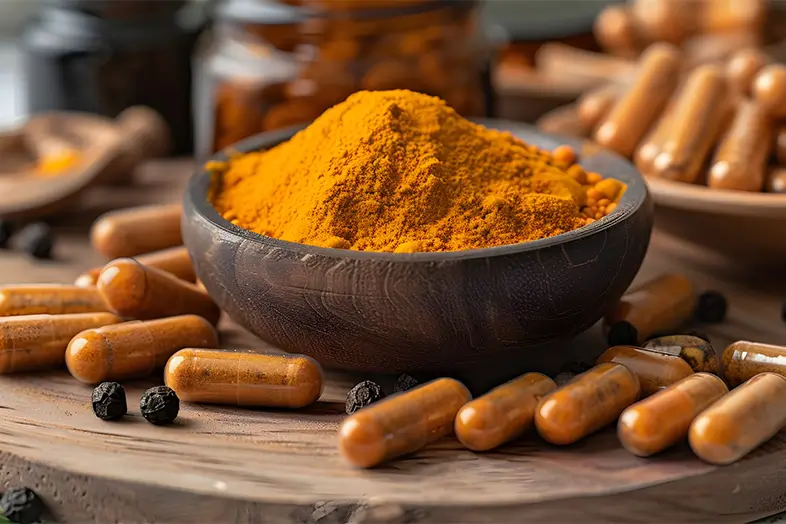
Garlic Supplements
What is Garlic Supplement?
Garlic is a well-known culinary herb that also offers significant health benefits due to its bioactive compounds, such as allicin. Garlic supplements are used to promote cardiovascular health and reduce inflammation throughout the body, including in joints.
Key Benefits of Garlic Supplements
- Improves Circulation: Garlic can enhance blood flow, which aids in delivering nutrients to damaged tissues and speeds up the healing process.
- Reduces Inflammatory Markers: It naturally lowers the production of pro-inflammatory cytokines, which can help lessen overall joint and spine pain.
- Supports Immune Function: With its powerful antioxidants, garlic helps modulate the immune system, potentially reducing autoimmune-related joint pain.
- Holistic Benefits: In addition to joint support, garlic is known for promoting heart health and overall wellness, making it a comprehensive supplement for long-term health.
Additional Patient Information
- How to Use Garlic Supplements?: Garlic supplements are available in various forms including capsules, tablets, or as garlic oil. Typical dosages vary, but many patients take between 600 mg to 1,200 mg per day.
- Safet & Side Effects of Garlic Supplements: Garlic is generally safe; however, some individuals may experience a mild aftertaste, garlic breath, or gastrointestinal discomfort. Those on blood-thinning medications should use garlic supplements with caution.
- Who Should Consider Garlic Supplements?: Patients with inflammatory joint or spine conditions, or those with cardiovascular concerns who can benefit from improved circulation, may be good candidates for garlic supplementation.
- Integration with Treatment Plans: Garlic supplements are often used alongside other regenerative medicine approaches to enhance overall anti-inflammatory effects. They can support tissue repair and work well with modalities like physical therapy and laser treatments.
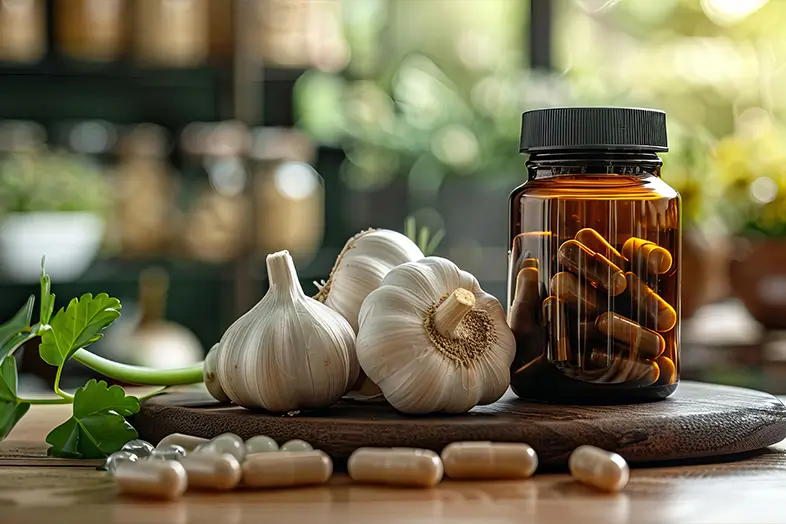
NSAIDs (Non-Steroidal Anti-Inflammatory Drugs)
What are NSAIDs?
NSAIDs are a class of medications commonly prescribed to reduce pain and inflammation. They work by inhibiting enzymes responsible for the production of inflammatory chemicals in the body.
Benefits of NSAIDs
- Rapid Pain Relief: NSAIDs provide quick relief from pain and swelling, making them particularly effective for acute flare-ups or post-injury symptoms.
- Effective for Both Acute and Chronic Conditions: They are widely used for managing symptoms of osteoarthritis, rheumatoid arthritis, and general musculoskeletal injuries.
- Well-Researched Option: NSAIDs have been extensively studied and are a trusted option in pain management protocols around the world.
- Accessible: These medications are available both by prescription and over the counter, making them an accessible option for immediate relief when needed.
Additional Patient Information
- How to Use NSAIDs: NSAIDs come in various forms, including tablets, capsules, topical gels, and injections. Common over-the-counter options include ibuprofen and naproxen, with prescription formulations available for more severe cases.
- Safety & Side Effects of NSAIDs: While NSAIDs are effective, long-term use can lead to side effects such as gastrointestinal discomfort, increased risk of bleeding, kidney issues, or cardiovascular concerns. It is important to use them as directed and under the guidance of your healthcare provider.
- Who Should Consider Them NSAIDs: Patients experiencing moderate to severe pain, especially during acute flare-ups or following an injury, may benefit from short-term NSAID use. They are often used in combination with other treatments for comprehensive pain management.
- Integration with Treatment Plans: NSAIDs are best used as part of a balanced treatment approach. Many patients use them briefly to manage severe pain while simultaneously initiating long-term strategies such as supplements, physical therapy, and laser treatments to support natural healing.
Making an Informed Choice
Each option offers unique advantages:
- Glucosamine Sulfate: Focuses on long-term cartilage repair and joint cushioning.
- Turmeric (Curcumin): Provides powerful natural anti-inflammatory effects to reduce pain and support joint protection.
- Garlic Supplements: Enhance circulation and immune balance, contributing to overall joint health.
- NSAIDs: Deliver rapid, potent relief from pain and inflammation for both acute and chronic conditions.
In many cases, patients benefit from a comprehensive strategy—using supplements for long-term health and NSAIDs for immediate symptom relief. Always discuss with a healthcare provider to tailor the best plan for your specific condition and lifestyle.
Consult with Our Expert Team
At CSC Regenerative Medicine, our board-certified physicians create personalized treatment plans that may include these supplements and medications. Our goal is to help you reduce pain, improve mobility, and support your long-term joint and spine health. Whether you lean toward a natural approach or a combination of methods, our team is here to guide you.
Ready to learn more?


